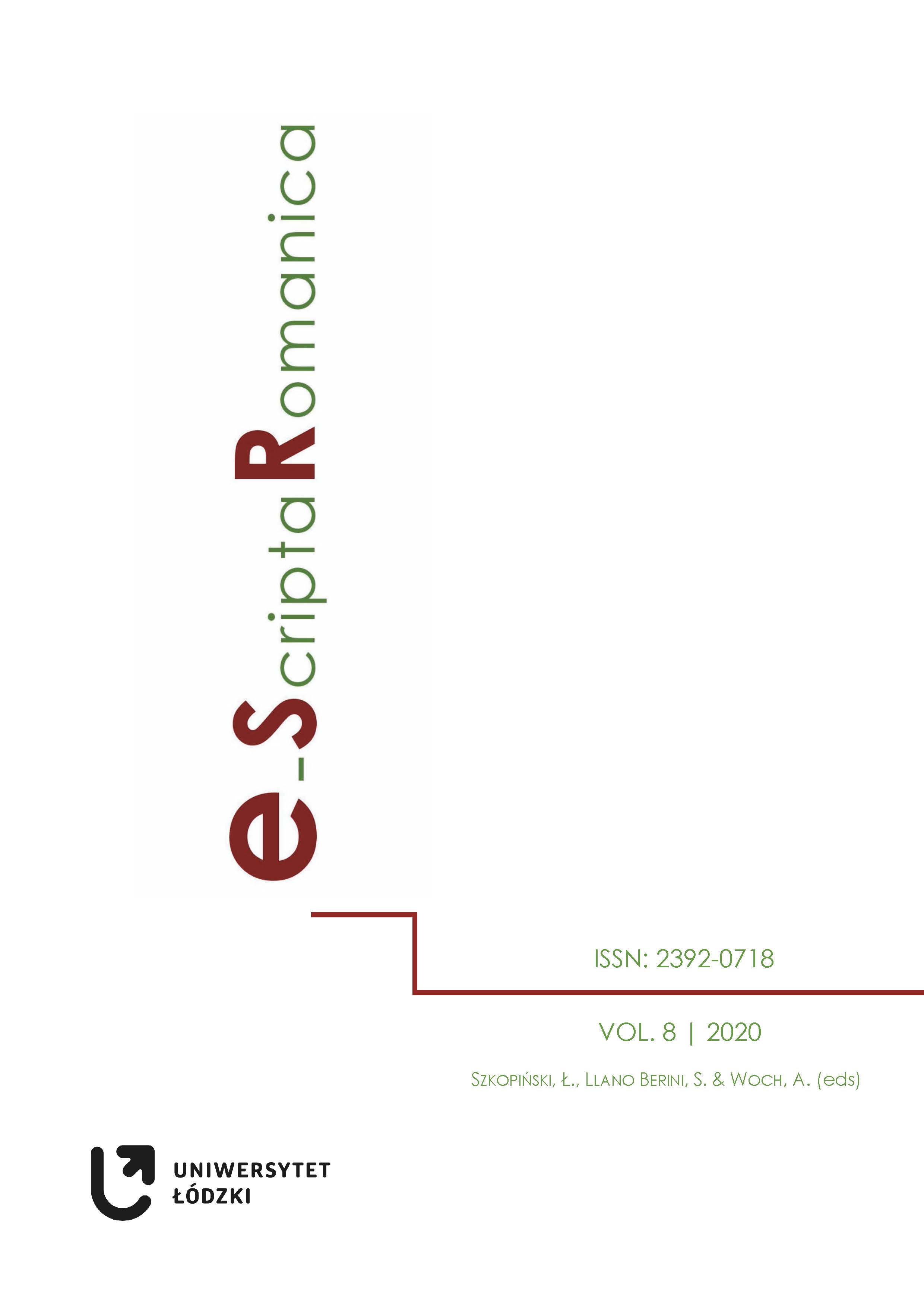Onomastic and parody in the "Crepúsculon" cartoon saga
DOI:
https://doi.org/10.18778/2392-0718.08.05Keywords:
onomastics, parody, Spanish comics, linguistics, rhetorical tropesAbstract
The myth of the vampire inspired many literary and audio-visual creations. Some of them tried to seduce a young audience. This is the case of the Twilight saga films (adaptation of the Stephenie Meyer novels), that the four Spanish comics of the cycle Crepúsculon want to parody. We will study Crepúsculon adopting an exclusively linguistic approach and more precisely, in this article, an onomastic approach, through rhetorical tropes.
References
CALDELAS, P., TORO, F., CIFUENTES, V. & ARREOLA, U. (2009). Crepúsculon. Barcelona : Panini Comics.
Google Scholar
CALDELAS, P., TORO, F., CIFUENTES, V. & ARREOLA, U. (2010). La Saga Crepúsculon. Luna lunera. Barcelona : Panini Comics.
Google Scholar
CALDELAS, P., TORO, F., CIFUENTES, V. & RITTER, K. (2011). La Saga Crepúsculon. Eclipsados. Barcelona : Panini Comics.
Google Scholar
CALDELAS, P., TORO, F., CIFUENTES, V. & GARCIA CRUZ, D. (2012). La Saga Crepúsculon. Madrugón. Barcelona : Panini Comics.
Google Scholar
MEYER, S. (2005). Twilight. London: Hachette Digital.
Google Scholar
BAKHTINE, M. (1970). La Poétique de Dostoïevski. Paris : Seuil.
Google Scholar
BAKHTINE, M. (2003). Esthétique et théorie du roman. Paris : Gallimard.
Google Scholar
BARRE, L. (1839). Complément du Dictionnaire de l’Académie française. Bruxelles : Société typographique belge Adolphe Wahlen et Cie.
Google Scholar
BEN AMOR, T. (2004). Polylexicalité, polysémie et jeu de mots. Syntaxe et sémantique, 5, pp. 207-222.
Google Scholar
DOI: https://doi.org/10.3917/ss.005.0207
GUIRAUD, P. (1976). Les jeux de mots. Vendôme: PUF.
Google Scholar
KLEIBER, G. (1981). Problèmes de référence. Descriptions définies et noms propres. Paris: Klincksieck.
Google Scholar
KLEIBER, G. (1995). Sur la définition des noms propres : une dizaine d’années après. In NOAILLY, M. (ed.), Nom propre et nomination. Paris : Klincksieck, pp. 11-36.
Google Scholar
LAPESA, R. (1999). Historia de la lengua española. Madrid: Gredos.
Google Scholar
LECOUTEUX, C. (2004). Histoire de vampires : autopsie d’un mythe. Paris : Imago.
Google Scholar
LEROY, S. (2001). Entre identification et catégorisation, l’antonomase du nom propre en français (Thèse doctorale). Université Paul Valéry - Montpellier III.
Google Scholar
LUQUE DURAN, J. DE D. (2007). Los juegos lingüísticos :fallos comunicacionales, humorismo verbal y reflexión metalingüística. In LUQUE TORO, L. (ed.), Actas del I Congreso internacional de léxico español actual. Venecia-Treviso : Università Ca’ Foscari Venezia, pp. 91-126.
Google Scholar
MONTEIRO CURIEL, L. (2011). Mola mogollón : la superlación morfológica y léxica en el lenguaje juvenil. Revista de Estudios de Juventud, 93, pp. 89-104.
Google Scholar
SPERBER, D. & WILSON, D. (1989). La Pertinence. Communication et cognition. Paris : Minuit.
Google Scholar
TRAN-GERVAT, Y.-M. (2006). Pour une définition opérationnelle de la parodie littéraire : parcours critique et enjeux d’un corpus spécifique. Cahiers de Narratologie, 13. http://journals.openedition.org/narratologie/372 [09/03/2020]. https://doi.org/10.4000/narratologie.372
Google Scholar
DOI: https://doi.org/10.4000/narratologie.372
Downloads
Published
How to Cite
Issue
Section
License

This work is licensed under a Creative Commons Attribution-NonCommercial-NoDerivatives 4.0 International License.











